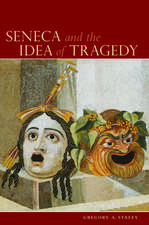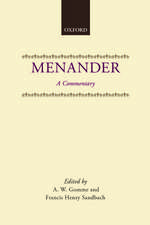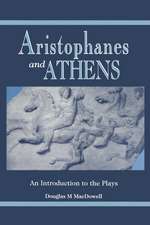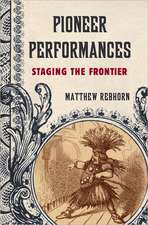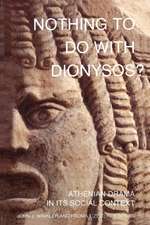Queer Virgins and Virgin Queans on the Early Modern Stage
Autor Mary Blyen Limba Engleză Hardback – iun 2000
Preț: 990.98 lei
Preț vechi: 1508.59 lei
-34% Nou
Puncte Express: 1486
Preț estimativ în valută:
189.65€ • 196.49$ • 158.27£
189.65€ • 196.49$ • 158.27£
Carte tipărită la comandă
Livrare economică 11-17 martie
Preluare comenzi: 021 569.72.76
Specificații
ISBN-13: 9780198186991
ISBN-10: 0198186991
Pagini: 224
Dimensiuni: 146 x 224 x 22 mm
Greutate: 0.41 kg
Editura: OUP OXFORD
Colecția OUP Oxford
Locul publicării:Oxford, United Kingdom
ISBN-10: 0198186991
Pagini: 224
Dimensiuni: 146 x 224 x 22 mm
Greutate: 0.41 kg
Editura: OUP OXFORD
Colecția OUP Oxford
Locul publicării:Oxford, United Kingdom
Recenzii
One is left very much better informed about the boys of Whitefriars and the men who marketed them. Bly's style is swift and sure and her insights into early modern sexual economics shrewd. Any student of role play, cross-dressing or homoerotics in Shakespeare will welcome this work.
She offers a Bly-on-the-wall glimpse into the activities of a little-studied company of boy players ... focusing particularly on the high incidence of bawdy puns in the work of their play-writers. Her method is logical, her touch light.
Bly is interested in how words construct gendered identities. And her account of current thinking about early-modern gender and sexuality in its fullness and readability is very student-friendly.
She offers a Bly-on-the-wall glimpse into the activities of a little-studied company of boy players ... focusing particularly on the high incidence of bawdy puns in the work of their play-writers. Her method is logical, her touch light.
Bly is interested in how words construct gendered identities. And her account of current thinking about early-modern gender and sexuality in its fullness and readability is very student-friendly.


